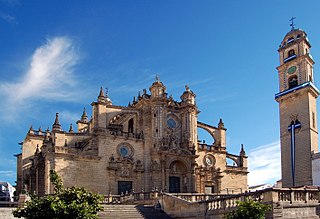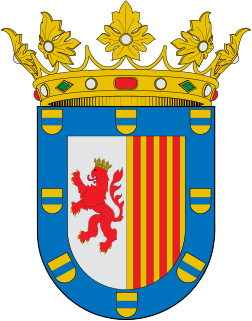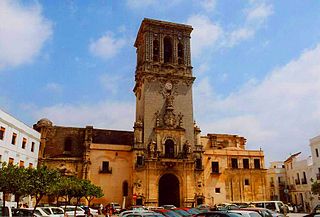| Walls of Arcos de la Frontera | |
|---|---|
| Native name Spanish: Murallas de Arcos de la Frontera | |
 City gate Puerta de Matrera | |
| Location | Arcos de la Frontera, Spain |
| Coordinates | 36°44′41″N5°47′59″W / 36.744789°N 5.799599°W Coordinates: 36°44′41″N5°47′59″W / 36.744789°N 5.799599°W |
| Official name: Murallas de Arcos de la Frontera | |
| Type | Non-movable |
| Criteria | Monument |
| Designated | 1993 |
| Reference no. | RI-51-0007553 |
The Walls of Arcos de la Frontera (Spanish: Murallas) are walls located in Arcos de la Frontera, Spain. It was declared Bien de Interés Cultural in 1993.[ citation needed ]

Spanish or Castilian is a Romance language that originated in the Castile region of Spain and today has hundreds of millions of native speakers in the Americas and Spain. It is a global language and the world's second-most spoken native language, after Mandarin Chinese.

Arcos de la Frontera is a town and municipality in the Sierra de Cádiz comarca, province of Cádiz, in Andalusia, Spain. It is located on the Northern, Western and Southern banks of the Guadalete river, which flows around three sides of the city under towering vertical cliffs, to Jerez and on to the Bay of Cádiz. The town commands a fine vista atop a sandstone ridge, from which the peak of San Cristóbal and the Guadalete Valley can be seen. The town gained its name by being the frontier of Spain's 13th century battle with the Moors.

Spain, officially the Kingdom of Spain, is a country mostly located in Europe. Its continental European territory is situated on the Iberian Peninsula. Its territory also includes two archipelagoes: the Canary Islands off the coast of Africa, and the Balearic Islands in the Mediterranean Sea. The African enclaves of Ceuta, Melilla, and Peñón de Vélez de la Gomera make Spain the only European country to have a physical border with an African country (Morocco). Several small islands in the Alboran Sea are also part of Spanish territory. The country's mainland is bordered to the south and east by the Mediterranean Sea except for a small land boundary with Gibraltar; to the north and northeast by France, Andorra, and the Bay of Biscay; and to the west and northwest by Portugal and the Atlantic Ocean.











